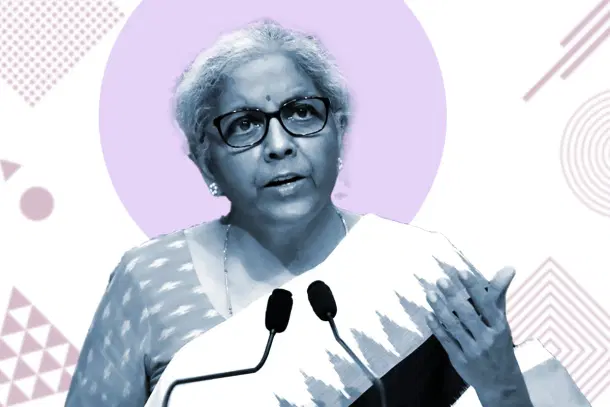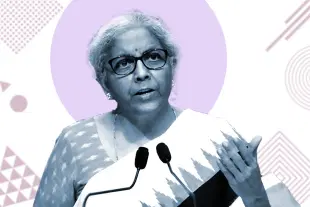News Brief
White Paper On Economy: How NDA And UPA Governments Compare On Delivery Of Key Programmes
Bhuvan Krishna
Feb 08, 2024, 06:56 PM | Updated 08:47 PM IST
Save & read from anywhere!
Bookmark stories for easy access on any device or the Swarajya app.


Today (8 February), Finance Minister Nirmala Sitharaman has presented a White Paper in Lok Sabha on the nation’s economy, highlighting the 'economic mismanagement' by the previous United Progressive Alliance (UPA).
It presents a comparison between the UPA years and 10 years of Modi government.
It details how the current government has tackled execution challenges that plagued its predecessor, the UPA government.
In case of rural affordable housing, the UPA government was able to achieve a target of 2.1 crores from 2003 to 2014 whereas the NDA government was able to achieve 2.6 crores between 2016-2024.
In construction of toilets, the UPA government was able to construct 1.8 crore toilets between 2011-2014 while the NDA government constructed 11.5 crores of toilets from 2014-2014.
When it comes to affordable pension for unorganised sector workers, the UPA government was able to reach out to 36.4 lakh beneficiaries from 2011-2014 whereas the NDA government was able to cover 6.1 crore beneficiaries in 2015-2023 period.
The UPA government was able to open 10.3 crore accounts within the span of 2005-2012 while the NDA dispensation achieved the target of 51.6 crore accounts within its 10 years.
Similarly, the NDA dispensation was able to outperform its predecessor in critical areas such as of rural electrification and optical fibre network by vast differences.
In the distribution of affordable medicines, the UPA government was able to open 164 Jan Aushadhi stores between 2008-2014 among which mere 87 are functional while the NDA government got 10,000 stores opened between 2014-2023.
In case of benefits of Maternity leave for the poor, the UPA government was able to cover 9.9 lakh beneficiaries in 53 districts between 2010-2013 while the NDA government was able to reach out to 3.59 crore beneficiaries between 2017 to 2013.

According to the White paper, one of the main reason for better performance of NDA government is the utilisation of technology as a tool for social empowerment which unlocked the potential of the JAM Trinity, comprising Jan Dhan, Aadhaar, and Mobile.
A prime example of the government's commitment to addressing leakages is the JAM-PAHAL scheme, which facilitated the transfer of LPG subsidies via Direct Benefit Transfer (DBT).
This initiative resulted in a significant reduction of leakages by 24 per cent, underscoring the administration's determination to reach the last mile of beneficiaries.
A notable achievement highlighted by the government is the utilisation of Aadhaar, which facilitated the transfer of over Rs 34 lakh crore to more than 1,167 crore beneficiaries under DBT.
The widespread adoption of user-friendly dashboards and Management Information Systems (MIS) across major schemes has brought about transparency and accountability through real-time monitoring.
The implementation of geo-tagging of assets under flagship programs such as MGNREGS and PM-AWAS Yojana has further enhanced transparency and real-time monitoring.
This transformative and decisive approach has resulted in a significantly improved track record of program delivery compared to previous administrations.
The government's proactive stance towards leveraging technology to streamline processes and enhance transparency underscores its commitment to efficient governance and inclusive development.
Bhuvan Krishna is Staff Writer at Swarajya.





